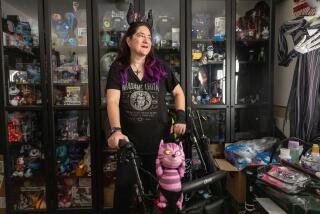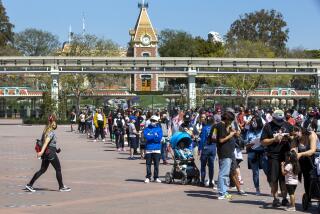Plan Discusses Disaster Relief for the Disabled
- Share via
The state Department of Rehabilitation released a comprehensive plan Monday stipulating how emergency response teams should assist disabled people before, during and after natural disasters.
The 81-page disaster preparedness report was presented by department Director Brenda Premo to Greg Renick of the governor’s Office of Emergency Services’ district field office in Pasadena at a news conference at the Independent Living Center of Southern California in Van Nuys.
The plan calls for improvements in transportation, communications, relief worker training, shelter accessibility, medical supplies and equipment accessibility, coordination of existing resources and housing replacement and restoration, among other issues.
“This report is about simple fairness,” said Premo, who is legally blind. “It’s about ensuring that people with disabilities receive the same treatment during natural disasters as anyone else in the state.”
The need for a statewide disaster plan for the disabled became painfully evident after the 1994 Northridge earthquake, when many people with disabilities were unable to access disaster relief services, Premo said.
After the disaster, Premo said, some wheelchair users found emergency shelters inaccessible, hearing-impaired people could not operate TDD telephones or watch television broadcasts with closed captions without electricity and guide dogs used by the visually impaired were turned away at some shelters.
Advocates for the disabled, such as Norma Jean Vescovo, executive director of the Independent Living Center, found themselves acting as liaisons between disabled disaster victims and emergency service providers unfamiliar with the population’s specific needs.
To help prevent similar situations in the future, state Health and Welfare Secretary Sandy Smoley directed Premo to draft the preparedness report. The final plan was written after public hearings and meetings with disabled people and disaster relief agencies.
The report “will go a long way in helping people with disabilities get fair and equitable treatment during disasters,” Vescovo said.
More to Read
Sign up for Essential California
The most important California stories and recommendations in your inbox every morning.
You may occasionally receive promotional content from the Los Angeles Times.










